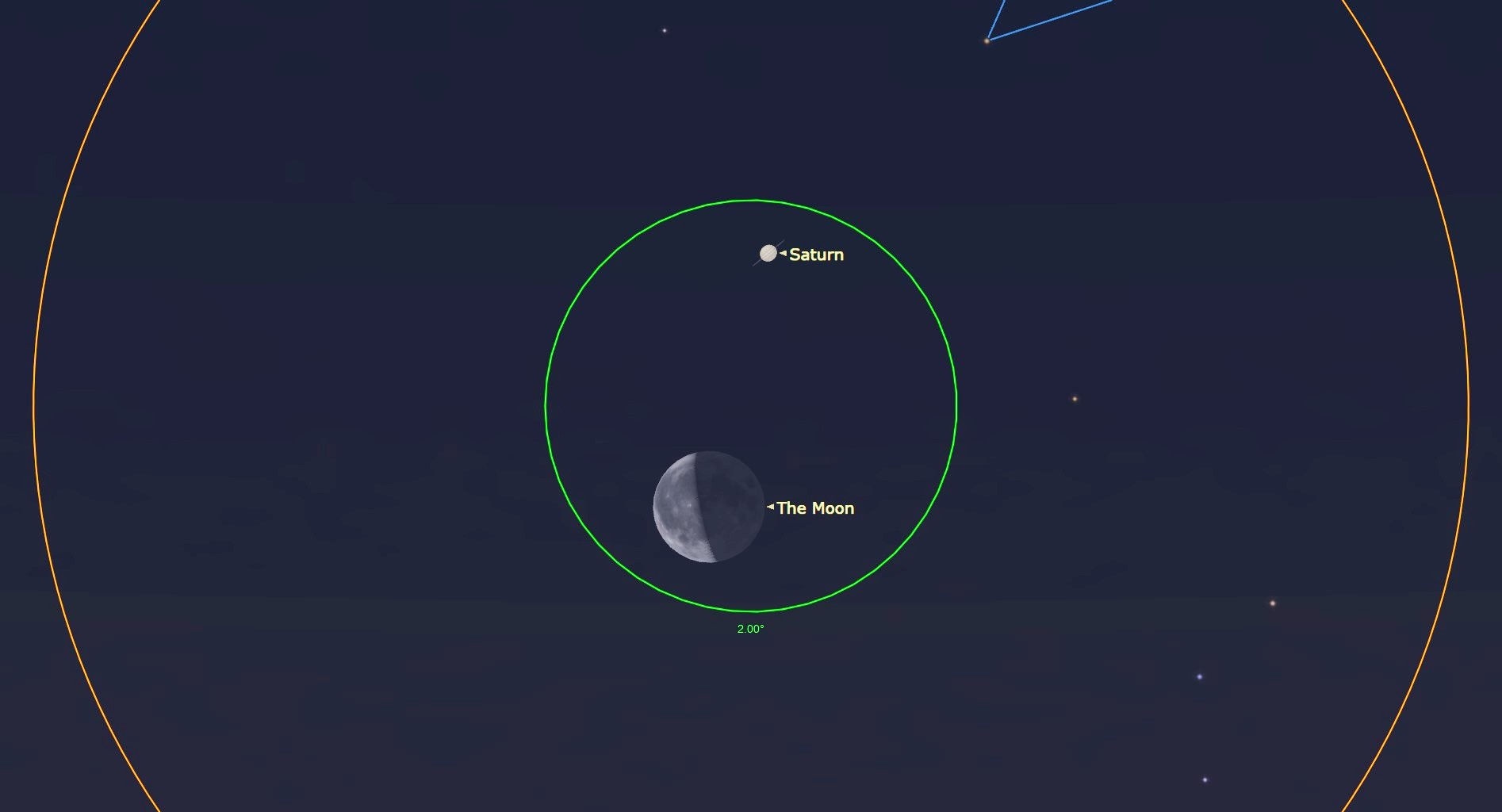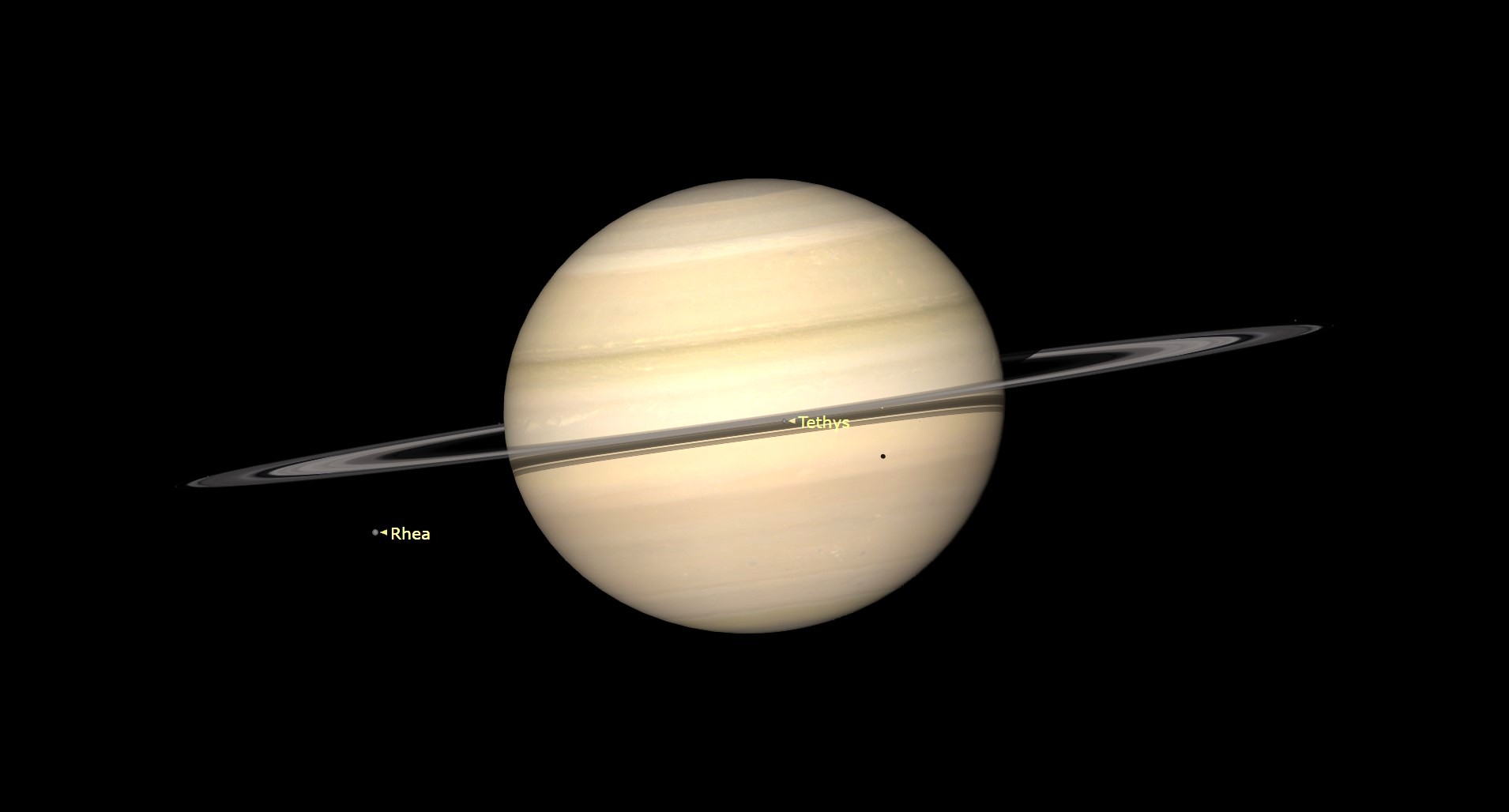
If you have a telescope, you might want to consider setting your alarm on Friday (May 31) for around 4 a.m. local daylight time (3 a.m. if you live in Hawaii, Arizona or Puerto Rico which do not observe daylight time). At that hour, if you step outside and look toward the east-southeast, you'll see what are probably the two most popular celestial objects to look at through a telescope: the moon and the planet Saturn.
The moon will be just a little over half a day past it officially arriving at its last quarter, or half-moon phase. Some might question why we call the moon at this particular phase a "quarter moon," since it is plainly obvious that what we see in the sky is a half-illuminated moon. But the "quarter" refers not to what we see in the sky, but rather that the moon is beginning its final quarter in its 29.53 day cycle, known as a synodic month.
The word synodic is derived from the ancient Greek word "sunodos," which by the mid 1600's became the English word "synod," which means "meeting"; because at new moon phase, the moon "meets" the sun. Thus, a synodic month begins at the new moon, and the moon is entering the last quarter of that month at its last quarter phase.
Related: What is the moon phase today? Lunar phases 2024
Saturn above the moon

Want to see the planets of the solar system up close? We recommend the Celestron Astro Fi 102 as the top pick in our best beginner's telescope guide.
And hovering about 1.2 degrees above the moon on Friday morning is the "Lord of the Rings," the planet Saturn. To the eye it appears as a bright yellow-white "star," currently shining at magnitude +1.2, about as bright as the star Fomalhaut, which on this morning, will be located about 23 degrees to the lower right of the moon and Saturn.
Your clenched fist held at arm's length measures roughly 10 degrees in width. So, Fomalhaut will be situated a little more than "two fists" from this moon/planet pairing and similarly hued (yellow-white) as well. The visual difference between Saturn and Fomalhaut is that Procyon appears to twinkle whereas Saturn shines with a steady, sedate glow.
Over the years, people have told me that they own a telescope but have never viewed Saturn through it. The reason? Most beginners in astronomy have trouble making a positive identification of it. Indeed, to the eye there is nothing really outstanding about Saturn. Venus and Jupiter can be identified by their great brilliance and Mars appears a distinctive fiery orange color. Saturn is indeed bright, but does not seem to overly "stand out" against the star background. What you really would like to have is some sort of benchmark to know positively where it is.
That benchmark on Friday morning will be the moon.

A bonus for South America
Incidentally, if you're reading this from the southern-third of South America, anywhere below a line running roughly from Santiago, Chile to Florianopolis, Brazil, you'll be able to see the moon pass directly in front of Saturn — an occultation — with Saturn disappearing behind the bright side of the moon and reappearing about 20 to 30 minutes later behind the dark, unilluminated side. A fascinating sight!
Nearly edgewise rings
A telescope trained on Saturn will always reveal it to be a magnificent sight, although at the present time its famous rings appear almost edge-on toward our Earth. They are currently inclined only 2.2 degrees from edgewise and they will appear to close ever-so-slightly more during June. Then, as we move into the summer and fall, as both our planet and Saturn move in their respective orbits around the sun, the angular perspective of the rings will change and they will appear to noticeably "open" a bit, so by the start of December they will be tilted more than 5 degrees in our direction.
If you have a 4-inch telescope, your best view will be using 100-power. With an 8-inch telescope, 200-power will provide you with an absolutely spectacular view, while through a 12-inch telescope at 300-power, it is a jaw dropping sight. Even veterans like myself, who have seen Saturn countless times over the years, never get tired of viewing it.
Moon also puts on a show
And don't forget to also check out the moon! Most might say that the best time to look at our nearest neighbor is when it's at full phase, but that's probably the worst time to look at it! When the moon is full it tends to be overly bright as well as flat and one-dimensional in appearance. In contrast, around the several-day interval when the moon is around the first or last quarter phase is when we get the best views of the lunar landscape right along the sunrise-sunset line or terminator.
If you do get outside with your telescope in the predawn hours of Friday morning, I'll bet you'll be so fascinated by what you see that you'll stay outside almost until sunrise. And incidentally, we're now just about a week away from the time of the earliest sunrise from the Northern Hemisphere.
What a great way to kick off a Friday!







